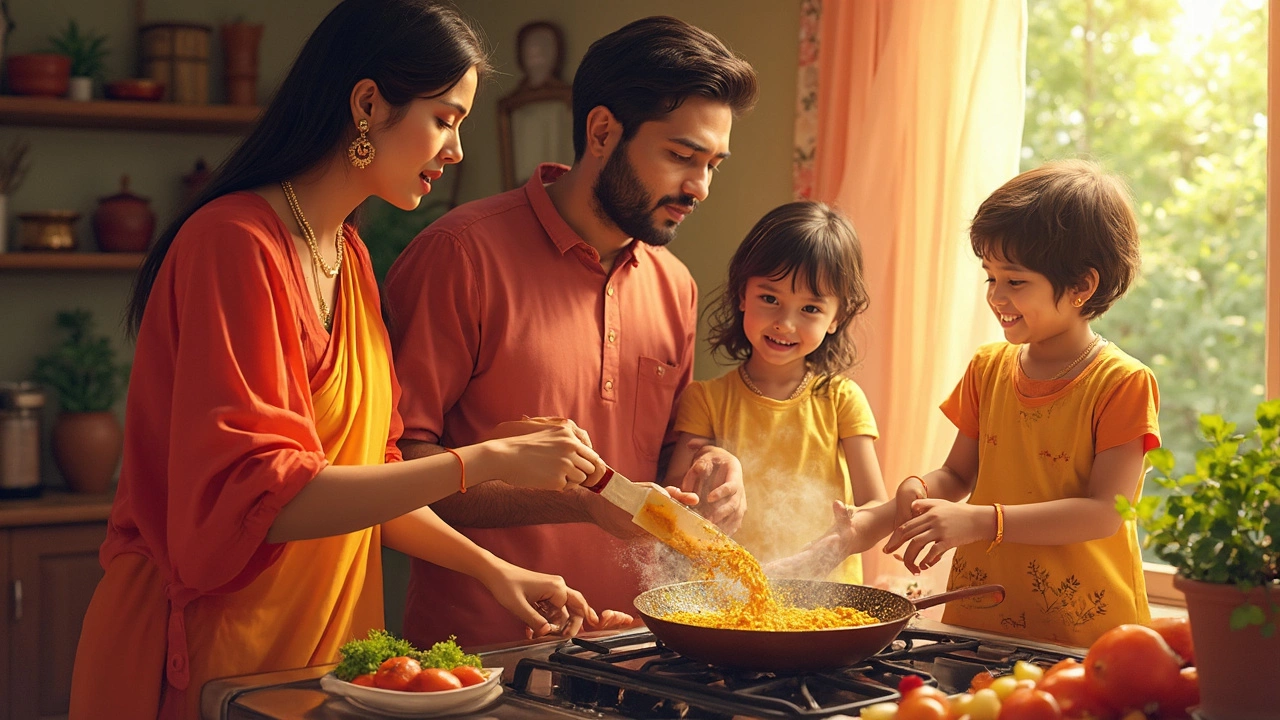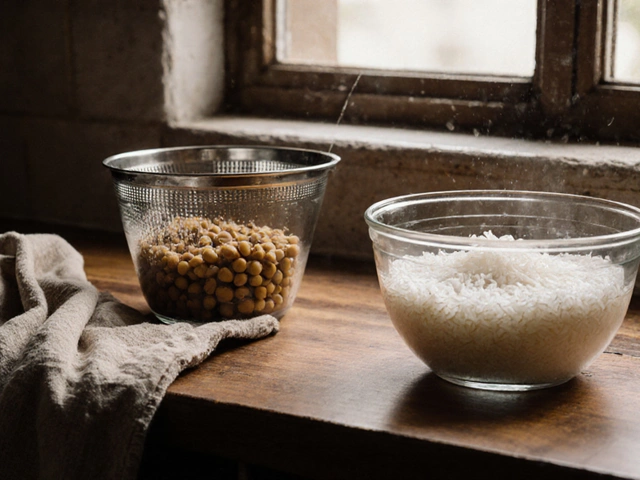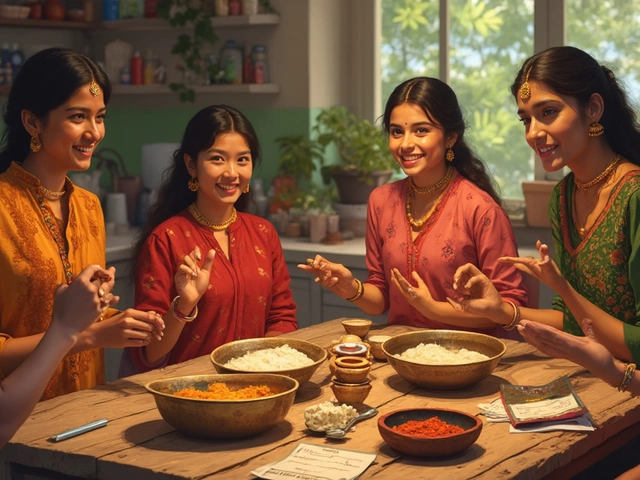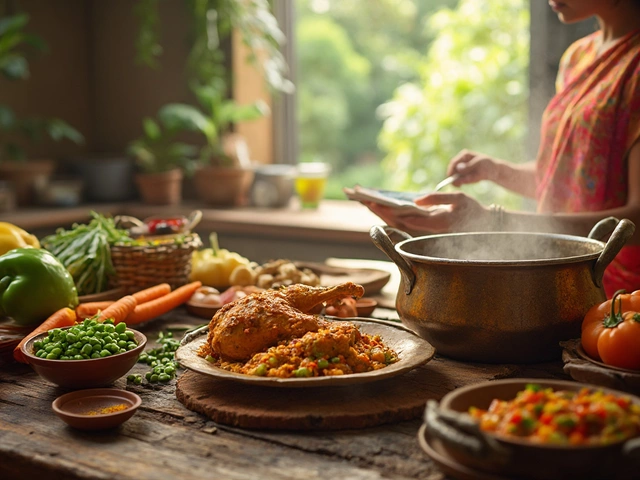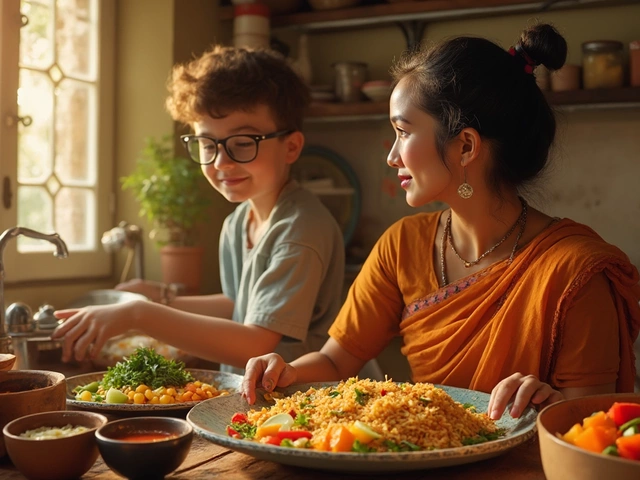Thinking about the vibrant flavors of India? They're irresistible, aren't they? But while the spices sing on your tongue, it's wise to be cautious about food and health, especially if you're visiting or trying out new dishes at home. Nothing ruins a great culinary adventure faster than a stomach bug.
So, how do you keep illness at bay while still indulging in mouth-watering Indian cuisine? Start with understanding a few basic food safety tips. When shopping for ingredients, always opt for fresh produce and organic spices. They not only enhance the taste but boost your health. Use purified or boiled water for cooking and washing raw foods—it's a simple step that makes a big difference!
Next, think about the ingredients you use. Turmeric, ginger, garlic—these aren't just for flavor. They're packed with health benefits that can strengthen your immune system, helping you fend off nasty bugs. And once you're armed with the right ingredients, you can whip up some mean healthy dishes that'll have you craving Indian food over and over again.
- Understanding Food Safety in India
- Essential Ingredients for Immunity
- Easy Indian Recipes that Boost Health
- Tips for Preparing Safe Meals
Understanding Food Safety in India
Traveling through the diverse landscape of India can be a feast for your senses, but paying attention to food safety is non-negotiable. Nothing puts a damper on your adventure like an unexpected bout of illness. So, how do you navigate food safety in this culinary wonderland?
Water: The Starting Point
It's a known fact that water in India can be a source of many health issues. Whether you're cooking your own meals or ordering a fresh juice, make sure to use purified or bottled water. Avoid tap water and even ice cubes made from it. When buying bottled water, check the seal to ensure it's intact, because sadly, tampering does happen.
Food Handling and Hygiene
Street food in India is legendary, but hygiene can vary. Choose stalls that are busy with locals—it’s a good indicator that the food is fresh and trusted. Additionally, pay attention to how the vendor handles food. Do they use gloves? Is food covered to prevent exposure to dust and insects? These little details can tell you a lot about the overall safety.
Choosing Safe Ingredients
If you’re preparing meals yourself, favor fresh Indian fruits and vegetables you can peel or cook. For instance, mangoes and bananas come with their protective covering. As for ingredients like fish and chicken, ensure they're well-cooked to kill any bacteria.
When in Doubt, Boil
A simple yet effective measure when uncertain about the safety of food or drink is to boil. It’s a quick way to eliminate harmful microorganisms. Whether you're making Indian recipes at home or having tea at a roadside stop, ensure that your water comes to a rolling boil first.
Safety Tips in a Nutshell
- Always opt for cooked foods over raw.
- Steer clear from pre-sliced fruits on display.
- Avoid dairy products unless you're certain they're pasteurized.
- Ask locals for safe eating places—they know best!
Essential Ingredients for Immunity
To truly immerse yourself in authentic Indian recipes while keeping your health in check, it's all about choosing the right ingredients. Let's dive into some necessary players you shouldn't skip when gearing up your culinary arsenal.
Turmeric
Known as the golden spice, turmeric is not just for its vibrant color. It's loaded with curcumin, a compound with powerful anti-inflammatory and antioxidant properties. Regularly adding turmeric to your diet can boost your immune system significantly. Try making a simple turmeric tea by boiling water with turmeric powder and adding a bit of honey and lemon.
Ginger
Whether it's fresh or ground, ginger is a staple in many Indian recipes. It aids in digestion, reduces nausea, and fights the flu and common cold. Ginger's benefits come mainly from gingerol, a natural oil that also gives it that spicy kick. Add grated ginger to your curries or brew it into your tea to stay healthy.
Garlic
This humble bulb is a powerhouse for your immunity. Packed with allicin, garlic helps fight infections and bacteria. A small clove added to your cooking can make a significant difference. It's perfect crushed into your curries or even eaten raw if you're feeling bold!
Leafy Greens
Think spinach, kale, and moringa leaves. They're loaded with vitamins A, C, and E, potent antioxidants crucial for immune function. Toss them into your healthy Indian dishes as a vibrant addition. Moringa, in particular, is gaining popularity in India for its nutritional density.
Yogurt
A daily dose of probiotics does wonders for your gut health, and that's what yogurt offers. Opt for plain yogurt to avoid extra sugars. Mix it with sliced fruits or use it as a base for spicy raitas. It cools down spicy meals while keeping your digestive tract in balance.
Incorporating these immune-boosting ingredients into your meals not only enhances the taste but also helps in staying fit and illness-free. Remember, the key to a strong immune system is consistency. So make these ingredients a regular part of your meals, and your body will thank you!
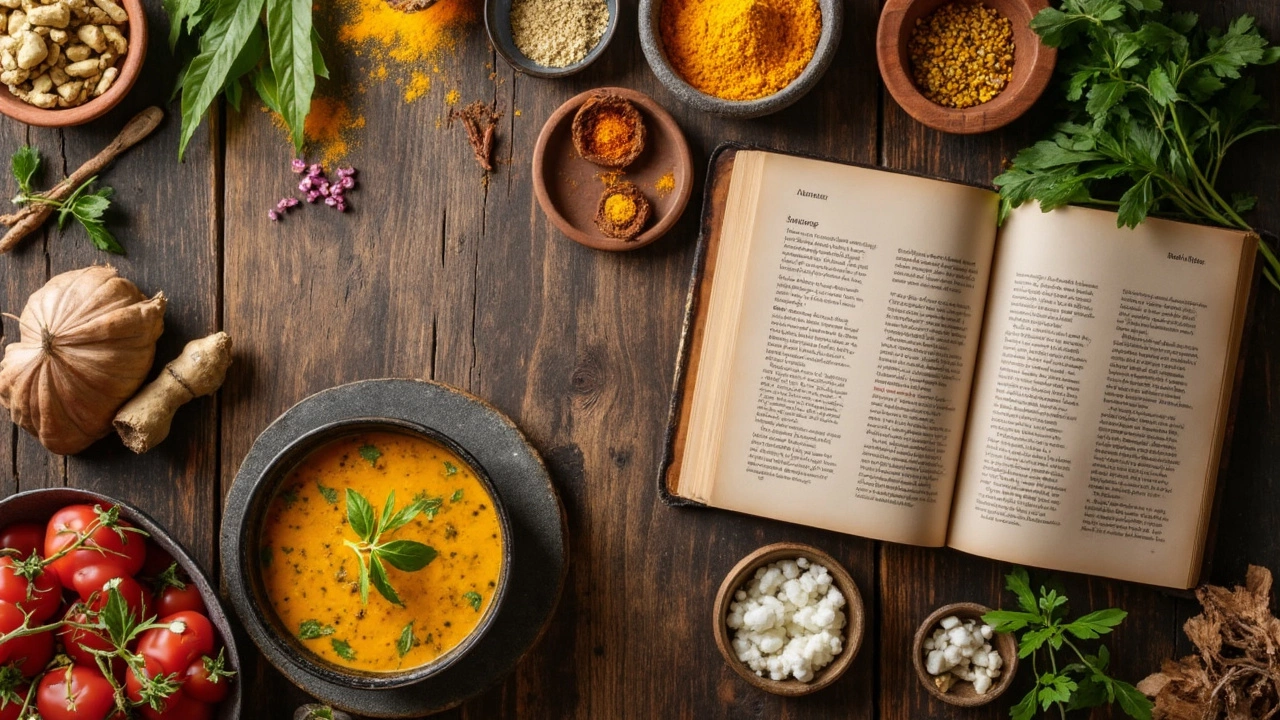
Easy Indian Recipes that Boost Health
Want to enjoy Indian dishes without worrying about your health? No problem! Here are some easy and healthy recipes that are packed with nutrients and flavors.
Mung Bean Curry
Mung beans are a powerhouse of proteins and fibers. They’re easy to cook and super nourishing. Here's how to make a simple mung bean curry.
- Soak 1 cup of mung beans overnight. It helps soften them and speeds up cooking.
- In a pot, add soaked beans, 3 cups of water, a pinch of turmeric, and salt. Bring to a boil and simmer until beans are tender.
- In a separate pan, heat 1 teaspoon of oil, add a teaspoon of cumin seeds, and let them sizzle. Toss in a chopped onion, a few cloves of garlic, and a thumb-sized piece of ginger.
- Once aromatic, add a chopped tomato and cook until it turns mushy. Mix in cooked mung beans. Finish with a sprinkle of garam masala and fresh cilantro.
Turmeric Ginger Soup
Need something refreshing, light, and immune-boosting? This soup’s got you covered!
- In a pot, bring 4 cups of vegetable broth to a boil. Add sliced ginger and a teaspoon of turmeric powder.
- Season with pepper and a bit of salt. Let simmer for about 20 minutes.
- Stir in your favorite vegetables like carrots or spinach for extra vitamins.
- Strain and serve hot. It’s a delicious immune booster!
Quinoa Pulao
This dish replaces rice with quinoa, making it highly nutritious and protein-rich.
- Rinse 1 cup of quinoa thoroughly to get rid of bitterness.
- In a pot, heat 1 tablespoon of oil, add a teaspoon of mustard seeds and let them pop.
- Add a chopped onion and sauté till golden brown. Throw in some peas, carrots, and bell peppers.
- Stir in the quinoa, add 2 cups of water, a bit of turmeric, and salt. Simmer for about 15 minutes until quinoa is fluffy.
With these easy Indian recipes, you can keep health in check while diving into delightful flavors. It just goes to show Indian cuisine can be as good for your body as it is for your taste buds.
Tips for Preparing Safe Meals
Cooking at home is generally safer than dining out, especially if you’re concerned about avoiding illness when exploring Indian recipes. Whether you're a beginner or a seasoned cook, these tips can help you whip up delicious and healthy meals.
1. Wash Everything Thoroughly
It might sound basic, but washing fruits, vegetables, and grains thoroughly before cooking is essential. Use clean, safe water to rinse off any dirt or pesticides. Investing in a good vegetable brush can help scrub away stubborn debris.
2. Know Your Ingredients
Toggle your grocery list with immune-boosting ingredients like turmeric and ginger. Fresh ginger tea, for instance, isn't just soothing; it’s also great for digestive health. And if your dish involves raw or partially cooked eggs, make sure they’re from a reliable source. Freshness here is key!
3. Proper Cooking Temperatures
Cooking meats to the right temperature is crucial. Use a meat thermometer to ensure poultry reaches at least 165°F (74°C) and beef or lamb at least 145°F (63°C). This practice kills harmful bacteria while keeping the meat tender.
4. Maintain Hygiene in the Kitchen
Keep your kitchen tidy to avoid cross-contamination. Regularly clean cutting boards, knives, and countertops with a mild detergent or a vinegar-water mix. Ensure your dish towels and sponges are clean—replace them regularly to maintain a germ-free space.
5. Storage Matters
Don’t overlook how you store your food. Keep raw meats sealed and separate from other groceries in the fridge. Leftovers should be cooled and refrigerated within two hours to prevent bacterial growth.
6. Trust Your Senses
Your sense of smell and vision can give you clues about food safety. If something looks or smells off, it’s better to err on the side of caution and avoid using it.
These steps can transform your cooking experience and keep you healthy while savoring the rich flavors of Indian cuisine. Prioritize these small but crucial safety measures for meals that are both tasty and safe!
- Poplular Tags
- Indian recipes
- healthy eating
- prevent illness
- Indian cuisine





